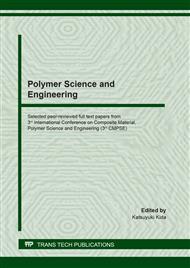p.157
p.165
p.174
p.182
p.188
p.193
p.199
p.205
p.211
Mechanical Properties of Recycled Polypropylene Macro Flat Fiber Reinforced Concrete with Rice Hull Ash as Partial Replacement to Cement
Abstract:
Due to urbanization, the use of concrete in construction and waste production are arising that resulted to negative impact in environment. There are several studies utilizing cementitious material as substitute to cement and plastic waste as additive to concrete which has potential in increasing the strength. This study utilized recycled polypropylene macro fiber (RPPMF) as a reinforcement and rice hull ash (RHA) as substitute to cement. Varying percentage of RHA (10%, 15%, and 20%) and RPPMF (0.5%, 0.75%, and 1.0%) were incorporated in the concrete mix. Compressive and flexural strength results showed that the combination of RHA and RPPMF has a significant effect in the strength of concrete. Based from the results, the concrete with 10% replacement of RHA and 0.5% addition of RPPMF is theoptimum which has the highest compressive strength of 19.47 MPa with an increase of 13.40%, and a maximum flexural strength test of 3.7 MPa with an increase of 18.62%. Furthermore, the concrete with 10% replacement of RHA for both with additive of 0.75% and 1% RPPMF also attained higher flexural strength than of normal mix with 18.07% and 3.45% increase, respectively. It can be recommended to use for basement foundation walls and slabs, walks, patios, steps, and stairs. Also, it can be used for street roads because it reaches the standard strength of normal mix concrete and lessen the cracks due to addition of RPPMF.
Info:
Periodical:
Pages:
199-204
Citation:
Online since:
August 2020
Price:
Сopyright:
© 2020 Trans Tech Publications Ltd. All Rights Reserved
Share:
Citation:


